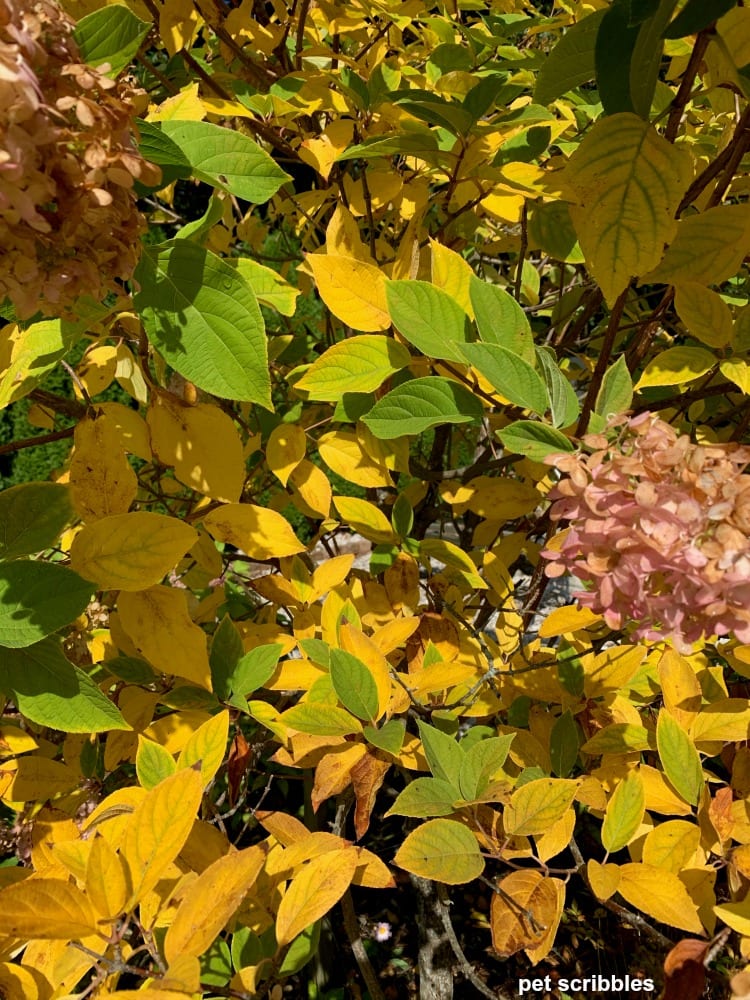9 Simple Techniques For Hydrangea Leaves Turning Yellow
Wiki Article
The 7-Minute Rule for Hydrangea Leaves Turning Yellow
Table of ContentsSome Known Incorrect Statements About Hydrangea Leaves Turning Yellow The Ultimate Guide To Hydrangea Leaves Turning YellowSome Ideas on Hydrangea Leaves Turning Yellow You Need To KnowThe Best Guide To Hydrangea Leaves Turning Yellow
Hydrangea plants are understood for their lovely blooms, however often their fallen leaves can transform yellow. This is generally an indication that something is wrong and the plant requires your assistance.Hydrangea leaves transforming yellow can be a cause for issue. Hydrangea leaves usually turn yellow when the plant is overwatered.
When the roots of a plant are submerged in water for extended periods, they start to suffocate and rot. This process cuts off the origins' oxygen supply, causing the fallen leaves to transform yellow and eventually pass away. Overwatering can additionally lead to various other issues such as leaf drop, root damages, and fungal growth.
If you think your Hydrangea is overwatered, the most effective remedy is to allow the dirt dry out entirely prior to sprinkling once again. It's likewise a great idea to check the drain of your pot or yard bed and make certain that water is not pooling around the plant's roots. Hydrangea plants need well-drained dirt to prosper.
All about Hydrangea Leaves Turning Yellow
You must also guarantee that you are not sprinkling your Hydrangea frequently. Watering once a week ought to suffice, and more frequently if the climate is warm and completely dry. Hydrangea leaves can also transform yellow if the plant is not getting enough water. This happens when the plant does not get adequate water, and the dirt starts to dry.
This is referred to as "fertilizer melt," It occurs when the plant's roots are revealed to way too much fertilizer. The roots can not soak up all of the nutrients and come to be damaged. This damages creates the fallen leaves to transform yellow and eventually pass away. Various other indicators of plant food shed include brown or yellow fallen leaves, wilting, and stunted development.
This will help get rid of any type of excess plant food from the origins of the plant. It's likewise a good concept to reduce the quantity of fertilizer you are making use of.
Hydrangea Leaves Turning Yellow Things To Know Before You Buy
If your Hydrangea is plagued with parasites, dealing with the plant with neem or gardening oil is the ideal option. It's additionally great to get rid of any type of afflicted fallen leaves from the plant (Hydrangea Leaves Turning Yellow).
To stay clear of spreading out the illness, make certain to disinfect your scissors before reducing any leaves off. Hydrangea leaves can likewise turn yellow if the temperature level stresses the plant. This usually happens when the plant is subjected to extreme chilly or warm. The fallen leaves of the plant will certainly turn yellow and start to drop off.
If the temperature level stresses your Hydrangea, you need to relocate the plant to a place where it will be shielded from the extreme cool or heat. You can likewise try to provide the plant with basics some partial color if subjected to route sunlight. You can also attempt adding compost around the plant base to aid manage the temperature.
The Of Hydrangea Leaves Turning Yellow
The leaves can also turn yellow if the Hydrangea plant has origin rot. This is typically triggered by overwatering or inadequate water drainage. When the plant's origins are submerged in water for as well long, they start to rot. One of the most usual root rot symptoms is yellowing leaves, as the fungi avoids the origins from soaking up nutrients from the soil.Web Site Other indications of origin rot consist of stunted development, wilting, and fallen leave decrease. Check the go to my site roots of your Hydrangea if it has root rot. If they are black or brown, after that they are possibly rotten. If some healthy and balanced roots are left, you can attempt to save the plant by replanting it in a brand-new pot with fresh dirt.
If your Hydrangea is heavily impacted by origin rot, starting with a new plant is best. As Hydrangeas age, their leaves will slowly transform yellow and brown before dropping off the plant.
You can assist the plant by guaranteeing it is getting adequate water and nutrients. One possibility is that the plant is not getting adequate water.
Report this wiki page